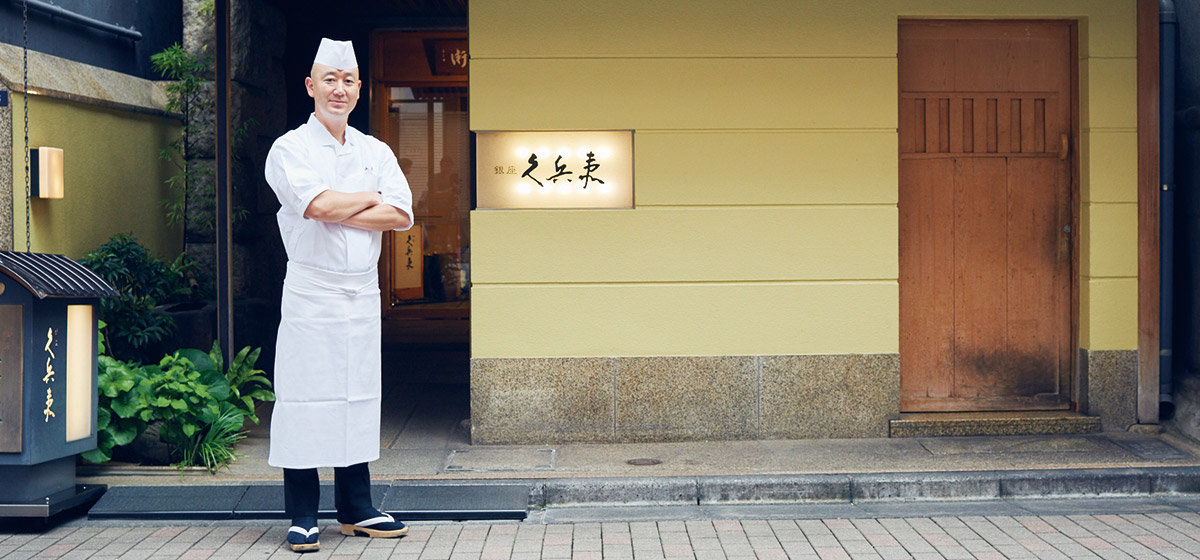Premium Sushi in Ginza
A Top-Class Sushi Restaurant to Dine at When You Visit Japan
Ginza Kyubey was founded in 1935. A sushi restaurant with a history of more than 80 years, it's also known as the pioneer of gunkanmaki (warship roll) sushi, made with uni (sea urchin). This restaurant is admired by many Japanese, and many sushi-lovers hope to eat there at least once in their lives.
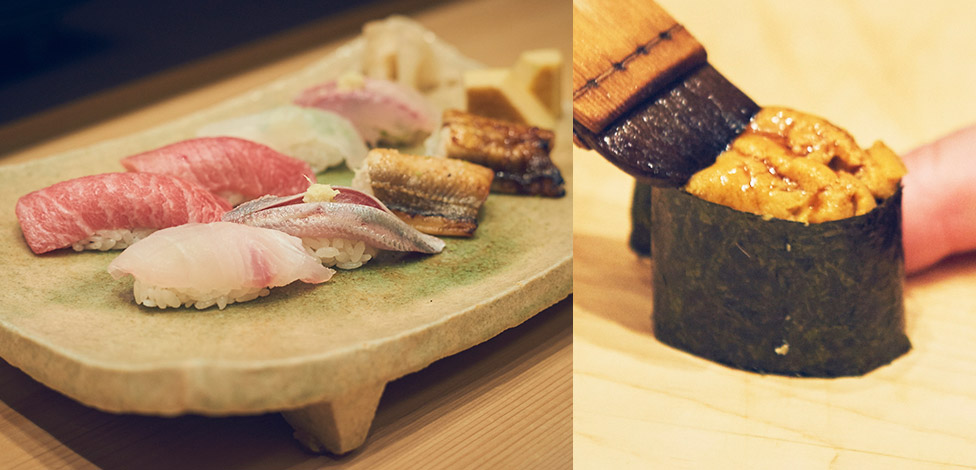
A variety of freshly prepared sushi (L) and gunkanmaki sushi roll filled with sea urchin (R).
Indeed, it's such a premium restaurant that when the president of the United States recently came to Japan, he ordered sushi to be delivered to his hotel from Kyubey. Today, about 20% of its customers are foreigners. Many of them come from Thailand, Indonesia, and other Southeast Asian countries. "It used to be that these customers would only order the fish that they were familiar with. Nowadays, they eat a wide variety of fish, just like our Japanese customers," explained Kagehisa Imada.
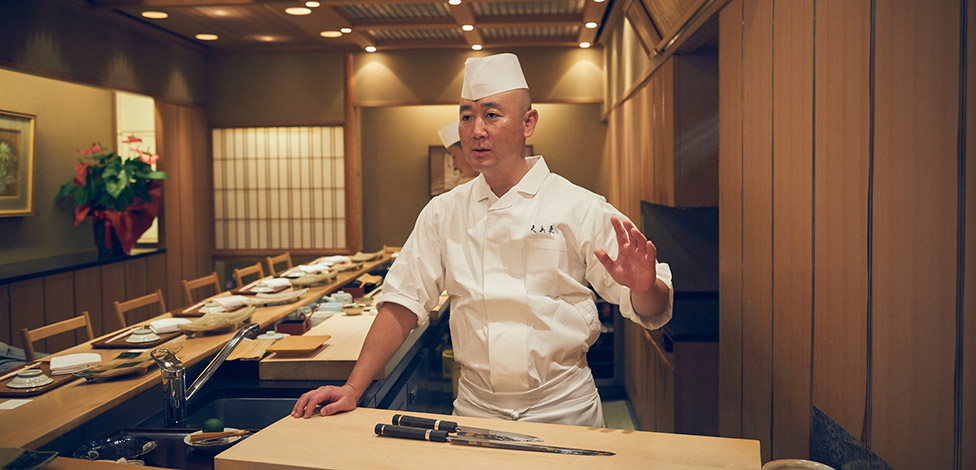
Kagehisa Imada – the third generation head chef of Kyubey.
Indeed, Kyubey considers these worldwide customers as fans. Chef Imada describes the restaurant's Omotenashi (warm and friendly hospitality) as follows, "We keep everything clean, always. We don't fuss excessively over the customers, we give everybody the same, fair service, we keep flavors at a constantly high level, and we charge reasonable prices. We believe that Kyubey's Omotenashi is a collection of all of these criteria combined."
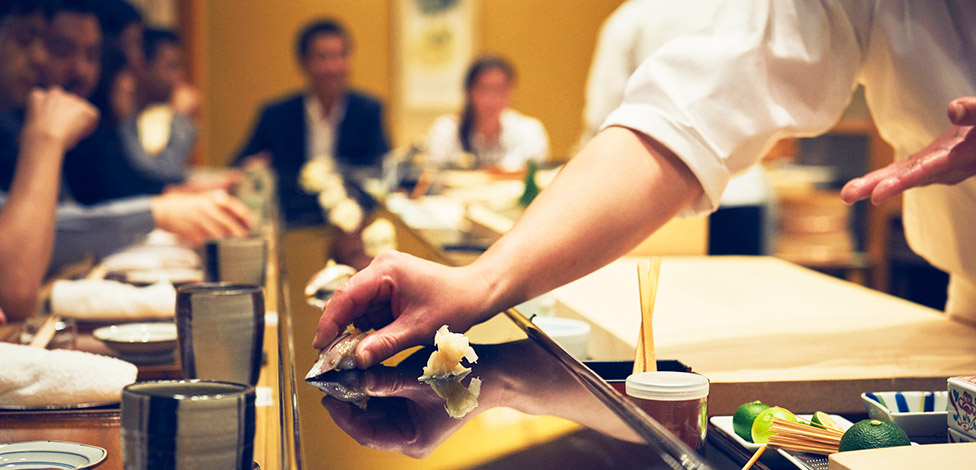
Warm and friendly hospitality for every customer.
Meticulous storage methods result in high quality food
Kyubey uses specific storage methods depending on the type of fish. For example, tuna is wrapped in a special paper that maintains its freshness, and then vinyl bags filled with ice are set on top, and the tuna is placed in a refrigerator. White fish meat is placed in a refrigerator that is set to -2ºC.Silver-skinned fishis stored in ice water. According to Chef Imada, "It's important to keep everything fresh and to prepare it quickly."
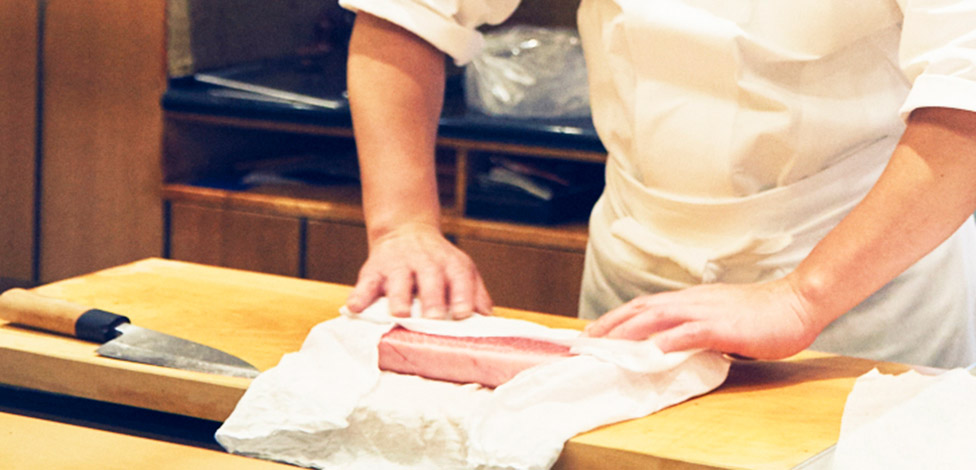
Special paper is specifically used to wrap tuna to keep it fresh.
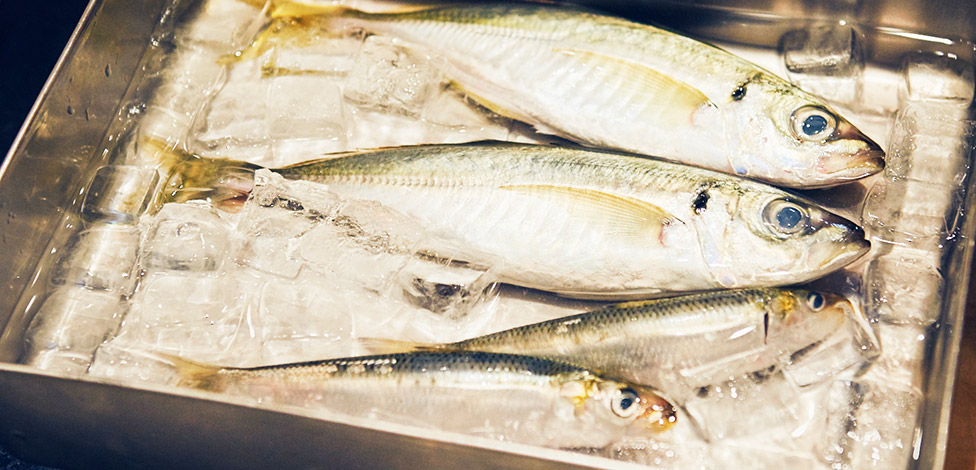
Ice water is used to store the silver skinned fished.
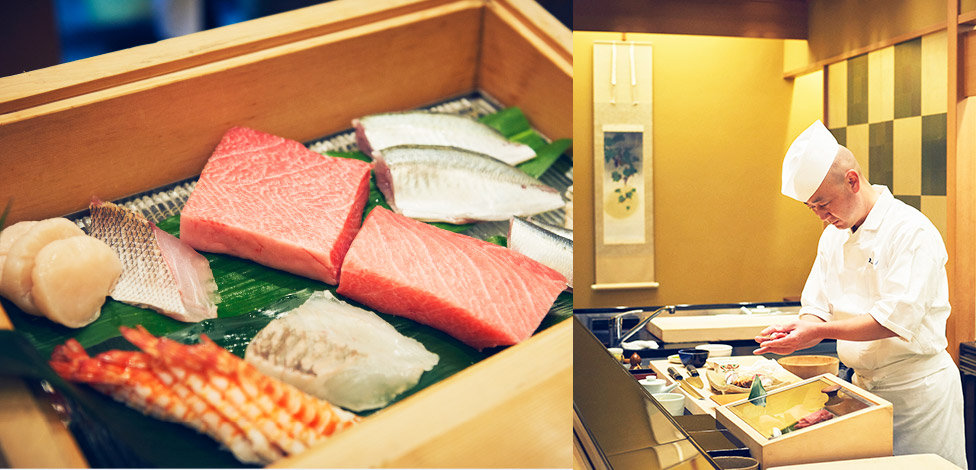
Netabako (wooden box for storing ingredients before serving) is one of the Kyubey’s methods to keep the food fresh.
If you visit Japan, don‘t forget to try out this premium level of sushi, experience yourself how delicious it is thanks to these elaborate preparation techniques.
Chef Imada also recommends the freshness retention of Panasonic refrigerators
Multiple doors allow to store different types of food seperately at the optimal temperature.
(1) Fridge compartment (Approx. 3 to 6°C)
Large, bright compartment has multiple door pockets for extra convenience.
(2) Prime Fresh Freezing (Approx. -3 to 2°C)
Prime Fresh Freezing compartment freezes food to approx. -3°C, so that only the surface of items is lightly frozen. This is to keep food fresh and easy to prepare.
(3) Ice compartment (Approx. -20 to -18°C)
Makes ice automatically, and stores it in its own separate, clean compartment.
(4) Fresh Freezing compartment (Approx. -19 to -17°C)
Rapidly freezes food and keeps it extra fresh.
(5) Freezer compartment (Approx. -20 to -18°C)
Allows you to freeze even large items such as whole chickens.
(6) Vegetable compartment (Approx. 3 to 8°C)
Holds plenty of vegetables and even tall items can be stored upright.
*The temperature may differ slightly depending on how the refrigerator in used.
Tags : FOOD , TRAVEL , Panasonic Products


